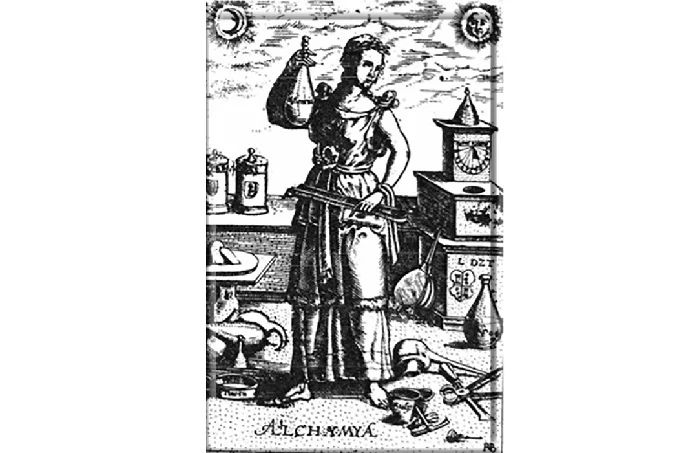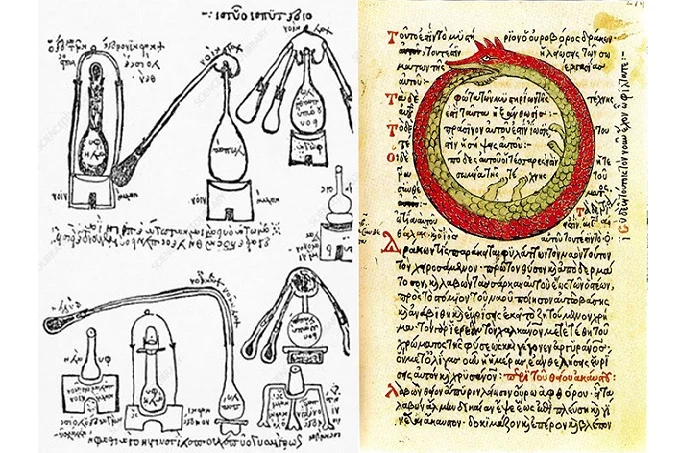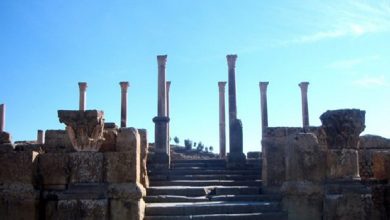Which woman discovered alchemy: Plato’s daughter, Moses’s sister or Mary Magdalene

How to melt chocolate, heat baby food in the days when there were no microwaves? Not only the household, but pharmaceuticals and even industry cannot do without a seemingly completely elementary thing that is familiar to everyone today. Previously, this invention and its scope were limited to the mystical science called alchemy.
However, It began with one simple discovery that every housewife uses in the modern world. Authorship for many years was attributed to a certain Zosimos, the Alchemist from Panopolis. But the mother of alchemy was actually a woman…
Mysterious Maria
If you believe the classical literature on this topic, then the authors attribute the discoveries to a woman named Mary of Judea, who lived in Egypt in the 3rd century. This error arose precisely thanks to an alchemist from Panopolis named Zosimos.
Many considered him an inventor, but in fact, he only quoted ancient texts. In the 4th century, he wrote a number of works under the general title Cheirokmeta (“Things made by hand”). Many texts of these works exist only in Greek, there are separate fragments translated into Arabic and Syriac.
The error arose from the fact that Zosimos, compiling a genuine anthology of historical practitioners of alchemy (until the 19th century, it was considered part of science), quotes Mary among other ancient sages. He cited the words of such people as Democritus, Moses, Ostanes, Hermes, Isis, Himes, Agathodemon, Pibechius, Iamblichus, and others.
Zosimos attributes the invention to Mary, ignoring, for example, that it was already described hundreds of years ago by the physician Hippocrates and the philosopher Theophrastus. The figure of this mysterious woman is surrounded by an impenetrable veil of secrecy. It is very difficult to find any supporting biographical texts.
Brief information says that Mary was born in Alexandria. At that time, it was the famous port city of Egypt. The rest of the information is limited to written works. It is known that she wrote several books, but, to the greatest regret, they were all destroyed by fire in the Library of Alexandria.
Those that remained were subsequently burned due to the reckoning of alchemy with witchcraft. Only a few quotations collected by other authors have survived. Thanks to this, there is at least some data on the conducted research and experiments.
One of these authors was the Byzantine George (Rev.) Sinkle. He served as the secretary of the Patriarch of the Orthodox Church, Tarasius. Sinkle wrote that Mary was the teacher of the famous Thracian philosopher Democritus when he lived in Memphis. There is a huge time gap here. Democritus really lived in Egypt for five whole years, but the catch is that it was six centuries earlier than George describes.
Another author of Arabic origin named Al-Nadim also mentions Mary in his encyclopedia Kitab al-Fihrist. He writes that she knew how to make caput mortuum. It is a waste product resulting from the process of chemical distillation.
The remainder of the nigredo, the first phase of the transformation of matter into gold (the other two were called albedo and rubedo), before its transition to a higher gold-bearing state. It should be added that, historically, an iron oxide pigment was also used to produce dark reddish colors, such as Venetian red or cardinal purple.
Plato’s daughter, Moses’s sister, or Mary Magdalene?
The Arabs considered Mary, the daughter of Plato. Some even dared to claim that this woman is the biblical Mary Magdalene. Others were sure that she was none other than Miriam, the sister of Moses and Aaron.
A certain hermit Morian, who was also an alchemist and even rumored to have owned the legendary philosopher’s stone, lived in Jerusalem in the 7th century, called her “Mary the prophetess.” So he wrote in his work “Liber de Compositione Alchimiae”. He was sure that she was the same Miriam described in the Old Testament book Exodus.
TheThe British learned historian Sherwood Taylor, who was director of the Science Museum in London in the 1950s, credits her as a pioneer in the field of alchemical practice.
From all of the above, it becomes clear that nothing is clear. Maria is a person with a completely obscure origin. Information about it is so contradictory and scarce that it is extremely difficult to sort it all out.
This makes one doubt the very existence of the mythical mother of alchemy. The most convincing evidence is the “Dialogue of Mary and Aros on the Magisterium of Hermes”, also known as “Excerpts”. These notes were made by an unknown Christian philosopher. He was not an author, but only rewrote ancient texts. Thanks to these texts, it is known what were the main operations of alchemy, with leukemia (bleaching) – by crushing, and with xanthosis (yellowing) – by calcination. In addition, the work describes the use of acid salts and includes recipes for making gold, opus magnum, including the use of mandrake.
This metaphorical dialogue takes place between two characters in Jewish literature. Here appear Hermes, the divine water, the four elements of Nature. There is no philosopher’s stone here. But the interpretation of minerals is described in a very interesting way.
Experts believe that the author or authors of these curious notes were a group of Jewish alchemist scientists who used the pseudonym Maria. This was done because of the custom of attributing astrological and alchemical themes to characters from the Bible. In any case, this testifies to the considerable antiquity of the text.
Axiom of Maria
Despite all this information, mysterious alchemical commandments are attributed to Maria on the basis of this work. For example, the union of opposites, that is, combine the male and female, and you will find what you are looking for. There is an axiom that bears her name: “One becomes two, two becomes three, and from the third one becomes the fourth.” Psychologists decipher these metaphors as explanations about the feminine, the earth, the earth’s bowels, and evil. All this is connected by odd numbers of Christian dogmatics.
Carl Jung himself used the Axiom of Maria to symbolize the process of individualization. He wrote that one would be an unconscious totality. The second is the conflict of opposites. The third is the transcendent function, described as “the psychic function arising from the tension between the conscious and the unconscious and maintaining their union.” The fourth is a transformed state of consciousness, relatively complete and peaceful.
Thus, this axiom can be interpreted as an alchemical analogy for the process of individuation from many to one, from the undifferentiated unconscious to individual consciousness.
That is, the matter was not limited to one water bath. Maria’s most outstanding quality was resourcefulness. She owns some of the most important tools for the practice of alchemy. For example, Zosimos describes tribicos for the first time and transcribes the description left by Maria herself. It was a three-horn distillation cube, consisting of a clay pot, from which the distilled liquid flowed through three copper pipes into three other vessels, and the manter served to condense the steam.

Another of the invented devices is kerotakis. It serves to process some metals with other vapors due to the fact that its container is sealed under a vacuum. It was more important than the tribicos in the sense that it was a fundamental tool in alchemical practice and, in fact, was used for transmutation.
Maria also used arsenic, mercury, and sulfur to reproduce the natural process of gold underground origin. The result was an alloy that looked like gold. In fact, of course, it was not gold. It was an alloy dyed with a pigment-based on lead and copper sulfide. Maria, of course, could not have imagined that many centuries later, a certain German named Franz von Soxhlet would use the same concept to invent the extractor of the same name.
Most helpful
All these complex devices and processes pale in comparison to Maria’s most popular and successful invention. They became … a water bath! In fact, this action was described earlier, but it remained in history as an invention by Maria. Before this invention spread to all the cuisines of the world, it was used to distill volatile or aromatic substances.
Now the method is based on heating one vessel inside another filled with water. Then they used sand and ash. Sand could withstand higher temperatures than water and kept warm longer. Rapid cooling of the vessel could disrupt the entire process.
Historians believe that it does not matter whether Maria was, in fact, or this is the conditional name of several learned authors. Women alchemists have indeed existed in history. There are such famous names as Madame de Pfuel and her two daughters. They worked for Federico II in the 18th century. There is Martine Bertereham, the wife of the alchemist Jean du Chaterlot, with whom she wrote several mineralogical treatises. There is Irene Hiller-Erlanger, who was also a poetess and one of the favorites of the aforementioned Fulcanelli. Also, Grace Mildmay, practitioner of medical alchemy, Emilia Lanier, Jane Lead, Lucy Hutchinson, and many, many others. Much more is known about them, and there is no dispute about their existence. Only Maria causes much more curiosity because of the halo of mystery with a touch of mysticism.
Many female scientists could outdo men in their field. To get the latest stories, install our app here.




